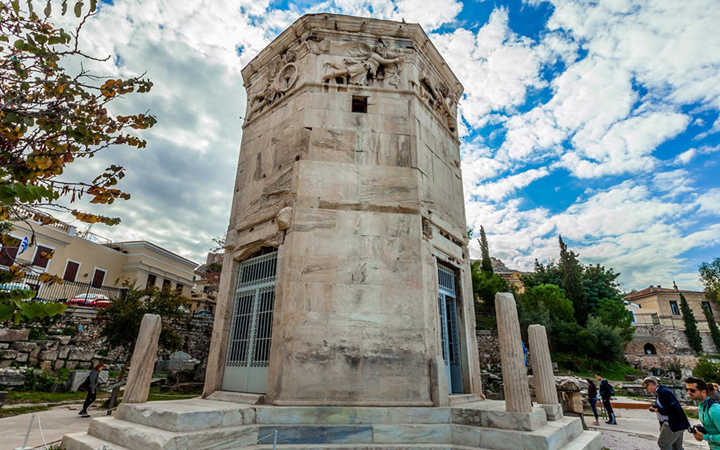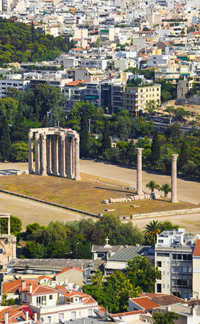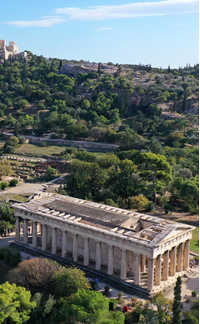Tucked into the Roman Agora in the heart of Plaka, Athens, the Tower of the Winds is one of the city’s most fascinating and often overlooked ancient monuments. Built in the 1st century BCE by the astronomer Andronikos of Kyrrhos, this octagonal marble structure is considered the world’s first meteorological station.
Standing over 12 meters tall, the tower once combined a sundial, water clock (clepsydra), and wind vane, all in a single design — a marvel of engineering in antiquity. Each of its eight sides is adorned with a sculpted relief of a wind god, representing the direction from which that wind blew. These figures — from Boreas of the north to Notos of the south — give the tower both artistic charm and scientific purpose.
In ancient times, the Tower served traders and philosophers alike, helping them tell the time and predict the weather. Rain or shine, it kept working thanks to a clever internal water system powered by a spring from the nearby Acropolis.
Though it faded into obscurity for centuries, being used as a Christian bell tower and later as a dervish lodge during Ottoman rule, the structure remained remarkably well-preserved. Today, visitors can explore its elegant carvings and restored interior, offering a rare glimpse into how the ancients combined art, science, and practicality.
Located just steps from the bustling Monastiraki Square, the Tower of the Winds is a quiet, timeless gem that brings together Athens’ classical past with the ingenuity of early science.


















